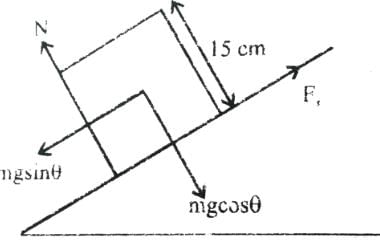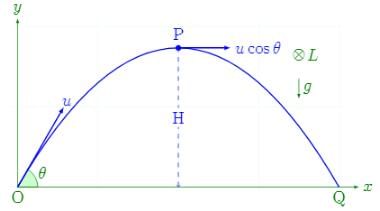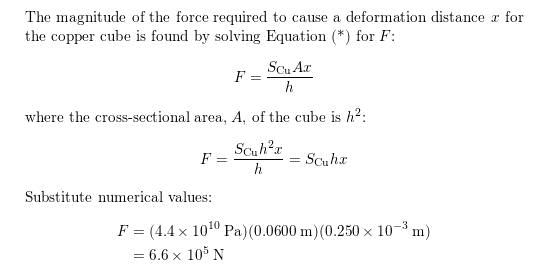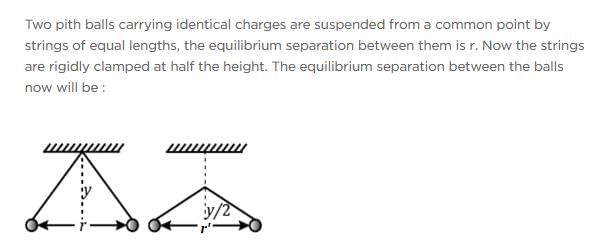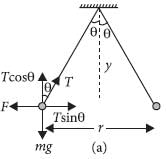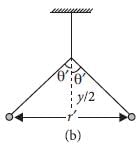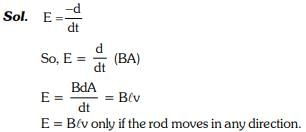DSSSB PGT Physics Mock Test - 5 - DSSSB TGT/PGT/PRT MCQ
30 Questions MCQ Test - DSSSB PGT Physics Mock Test - 5
The mass of a box measured by a grocer’s balance is 2.300 kg. Two gold pieces of masses 20.15 g and 20.17 g are added to the box. What is the difference in the masses of the pieces to correct significant figures?
Which of the following algebraic operations on vectors not permissible?
A block of base 10 cm × 10 cm and height 15 cm is kept on an inclined plane. The coefficient of friction between them is . The inclination q of this inclined plane from the horizontal plane is gradually increased from 0º. Then [jee 2009]
A body of mass 100 g is sliding from an inclined plane of inclination 30°. What is the frictional force experienced if μ=1.7
The total mechanical energy of a system is conserved if the
In case of a projectile, the angular momentum is minimum
A satellite revolves in the geostationary orbit but in a direction east to west. The time interval between its successive passing about a point on the equator is
A satellite which appears to be at a fixed position at a definite height to an observer is called:
A lead cube measures 6.00 cm on each side. The bottom face is held in place by very strong glue to a flat horizontal surface, while a horizontal force F is applied to the upper face parallel to one of the edges. How large must F be to cause the cube to deform by 0.250 mm? (Shear modulus of lead = 0.6 × 1010Pa)
A plank of mass m is kept at rest on two identical sphere, each of mass mo and radius R The plank is connected to two ideal spring, which is turn are attached to walls as shown in the figure. Find the frequency of small (horizontal) oscillations (in the plane of the figure) of the plank. Assume pure rolling at all contact surfaces
A particle of mass m is allowed to oscillate on a smooth parabola x2 = 4ay, a > 0, about the origin O (see figure). For small oscillations, find the angular frequency ( ω )
If the path difference between the interfering waves is nl, then the fringes obtained on the screen will be
A hollow spherical conductor of radius 2m carries a charge of 500 μ C. Then electric field strength at its surface is
A compass needle free to turn in a horizontal plane is placed at the centre of circular coil of 30 turns and radius 12 cm. The coil is in a vertical plane making an angle of 450 with the magnetic meridian. When the current in the coil is 0.35 A, the needle points west to east. Determine the horizontal component of the earth’s magnetic field at the location
Two ends of a horizontal conducting rod of length l are joined to a voltmeter. The whole arrangement moves with a horizontal velocity v, the direction of motion being perpendicular to the rod. Vertical component of the earth's magnetic field is B. The voltmeter reads
A flux of 1m Wb passes through a strip having an area A = 0.02 m2. The plane of the strip is at an angle of 60º to the direction of a uniform field B. The value of B is
The number of turns in a long solenoid is 500. The area of cross-section of solenoid is 2 × 10-3 m2. If the value of magnetic induction, on passing a current of 2 amp, through it is 5 × 10-3 tesla, the magnitude of magnetic flux connected with it in webers will be
A conducting loop of radius R is present in a uniform magnetic field B perpendicular the plane of the ring. If radius R varies as a function of time `t', as R = R0 + t. The e.m.f induced in the loop is

The images of clouds and trees in water always less bright than in reality
A myopic person can see things clearly if they lie between 8 cm and 100 cm from his eye. The lens will enable him to see the moon distinctly if its focal length is:
The ratio of angular dispersion of to the angle of deviation for the mean wavelength is called Dispersive Power. Represented by
An unpolarised beam of intensity Io is incident on a polarizer and analyser placed in contact. The angle between the transmission axes of the polarizer and the analyser is θ. What is the intensity of light emerging out of the analyser?
Reason why there are many lines in an atomic spectrum is because
90% of a radioactive sample is left undisintegrated after time τ has elapsed, what percentage of initial sample will decay in a total time 2τ?
The depletion layer in the p-n junction is caused
In an n- type silicondiode, which of the following statement is true :




